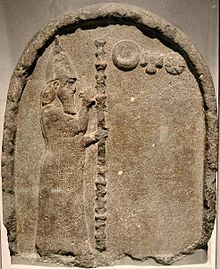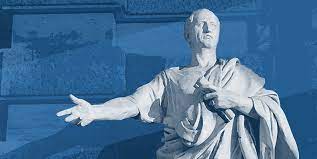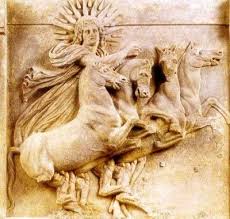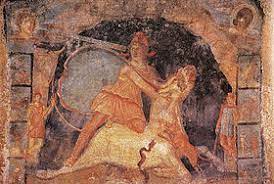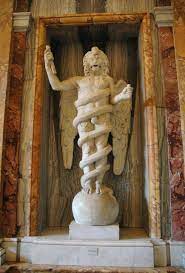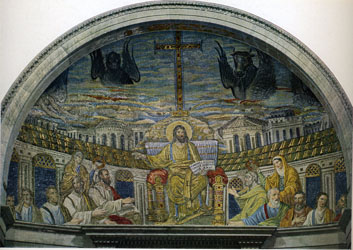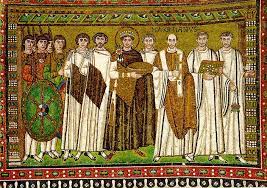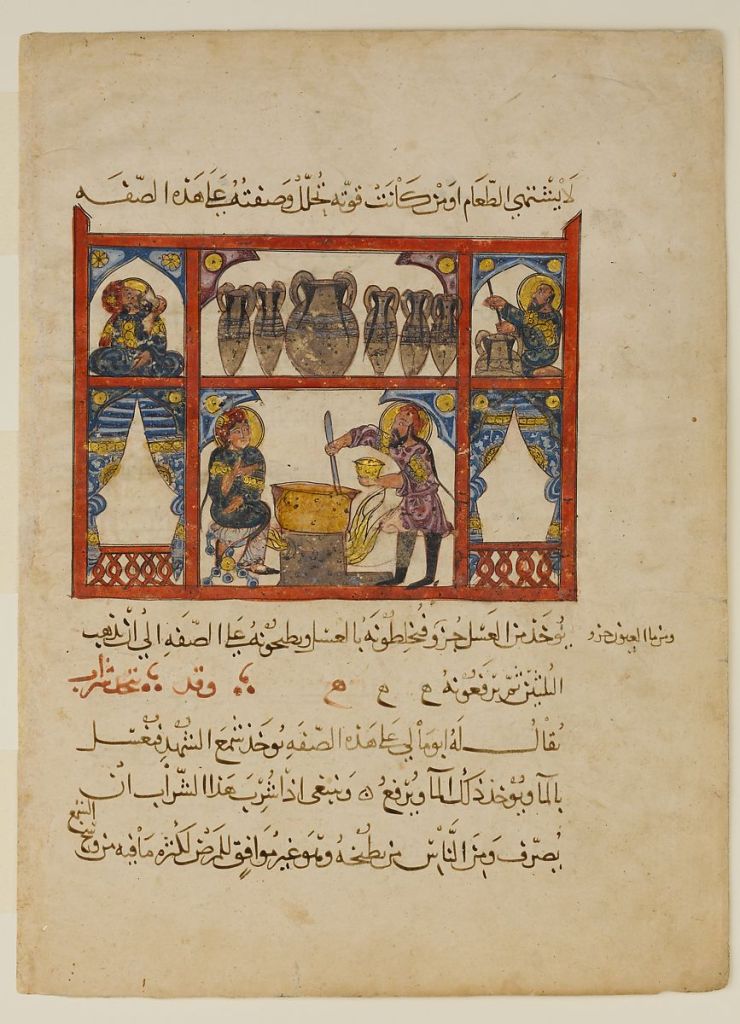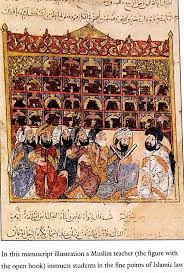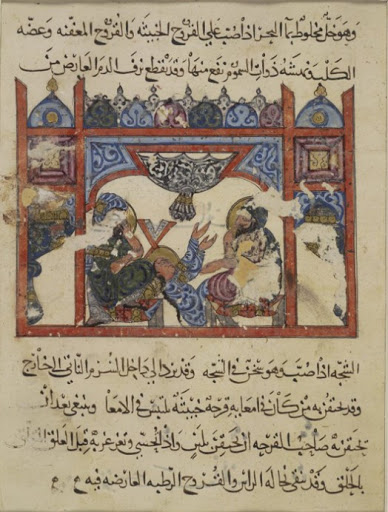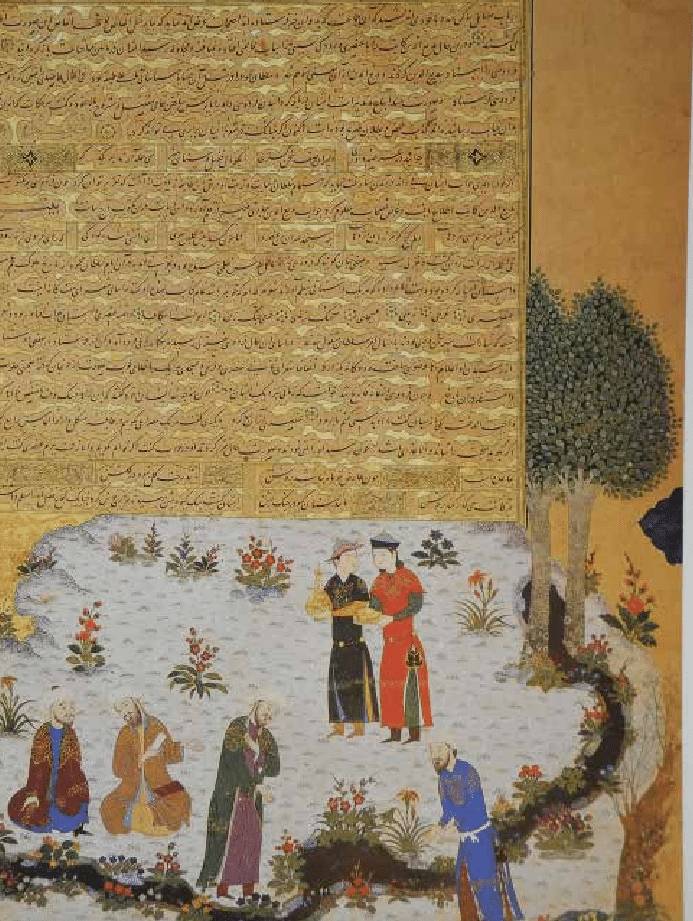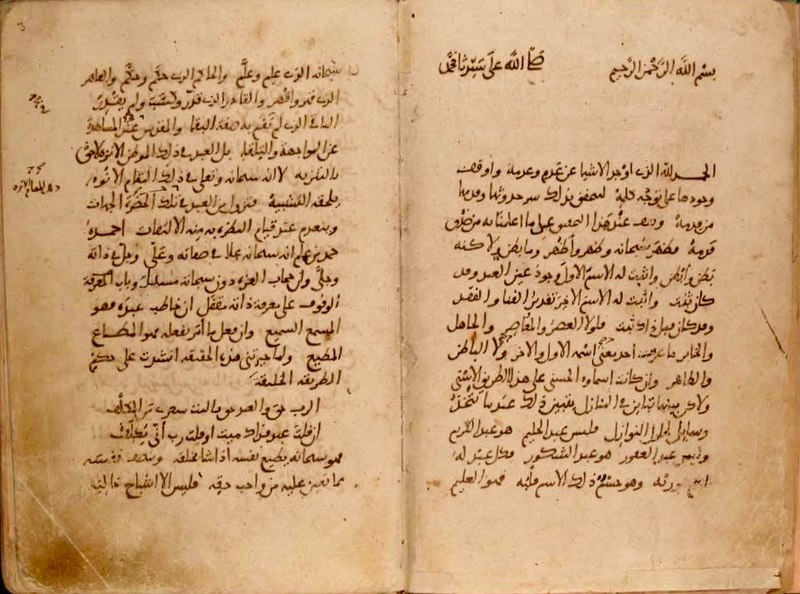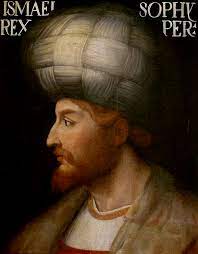Pre-publication of chapter XI of my forthcoming book “Turkey is Iran and Iran is Turkey – 2500 Years of indivisible Turanian – Iranian Civilization distorted and estranged by Anglo-French Orientalists”; chapters XI, XII, and XIII constitute the Part Four (Fallacies about the so-called Hellenistic Period, Alexander the Great, and the Seleucid & the Parthian Arsacid Times) of the book, which is made of 12 parts and 33 chapters. Chapter XII ‘Parthian Turan: an Anti-Persian dynasty’ has already been uploaded as partly pre-publication of the book; it is currently available online here: https://www.academia.edu/52541355/Parthian_Turan_an_Anti_Persian_dynasty
The book is written for the general readership with the intention to briefly highlight numerous distortions made by the racist, colonial academics of Western Europe and North America only with the help of absurd conceptualization and preposterous contextualization.
—————————-
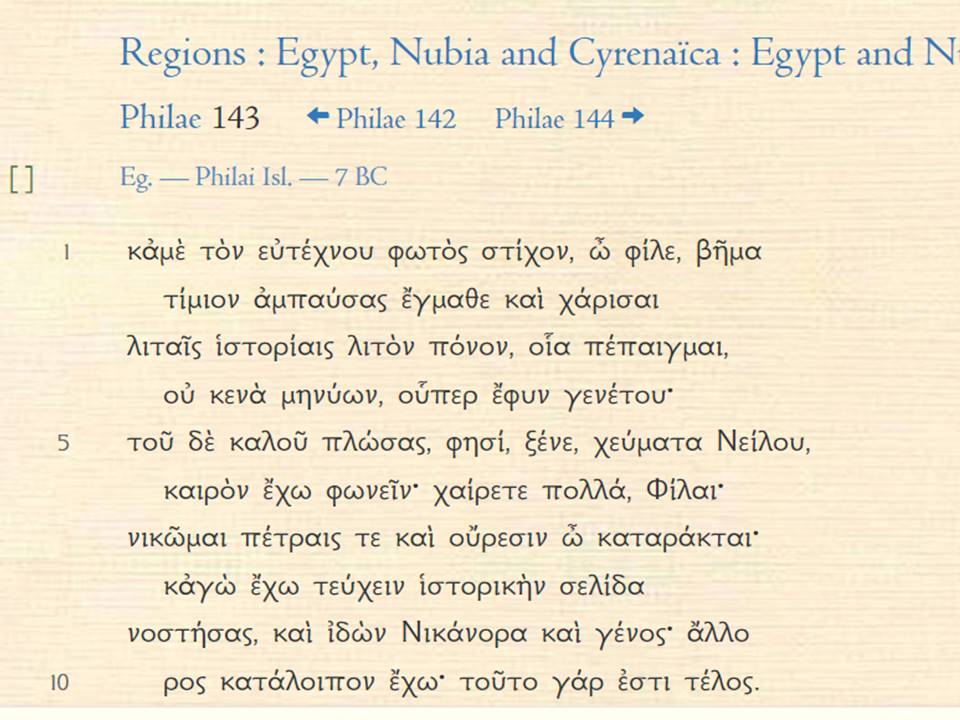
When so evidently the so-called Ancient Greeks disregarded politics, philosophers, theaters and agoras, finding solace, wisdom, science and spirituality at the Island of Philae Temple of Isis, no one can further use the fallacious term ‘Hellenism’. Even if theoretically the Ancient Greeks existed as an ethnic group (which is wrong), they ended up as pilgrims in Ancient Egyptian, Babylonian and Iranian temples, because the Ancient Greek religion was a quackery and the Ancient Greek mythology was a blasphemy. No 143 Ancient Greek graffito from the First Pylon of the Temple of Isis at the Island of Philae (7 BCE); from: https://epigraphy.packhum.org/text/219643

Seleucid (312-63 BCE), Ptolemaic (305-30 BCE) and Attalid (282-133 BCE) times have also been distorted enormously by the colonial Latinists, Hellenists, and Orientalists, over the past two centuries; they deliberately undertook a systematic Hellenization of the material record, being Eurocentric in their approach, discriminatory in their efforts of representation and interpretation of the historical past, and oblivious of every text and monument that would eventually refute their preconceived falsehood.
In this case, the fabrication and propagation of the term ‘Hellenistic period’ for this part of Late Antiquity represents only a minor dimension of the colonial academics’ falsifications and a small part of the fallacious Western historiography about the topic. In fact, there was never any ‘Hellenistic period’ anytime anywhere.
The term ‘Hellenism’ was used indeed in Ancient ‘Greek’ texts about several nations that became familiar with the disorderly Ancient Pelasgian-Philistine-Peleset (which is wrongly called ‘Greek’/’Hellenic’ by colonial academics and intellectuals) lifestyle and culture during the early periods of Late Antiquity. However, this situation was sacrilegious if evaluated on the basis of Achaean and Danaan measures and moral standards that Homer had tried to reinstate, but failed. In fact, ‘Hellenism’ was an explicit form of Anti-Achaean odium that should consequently be defined as ‘Pelasgianism’.
The familiarization phenomenon was basically attested in the case of the Lydians, the Carians, the Lycians, and the Phrygians; to lesser extent, it concerned the Thracians, the Macedonians, the Illyrians and the Romans. But all these populations, earlier known as Lukka, Kaeftiu, Sherden and Tarwisha/Tarwiya (Troy) in the Ancient Hittite or ‘Sea Peoples’ in the Ancient Egyptian texts, were ethnically, culturally and linguistically associated with the Anti-Achaean and Anti-Danaan Pelasgians-Peleset of the 2nd millennium BCE South Balkans. It was therefore quite easy for them to assimilate with those who had been their allies in the destruction of both, the old Hittite-Achaean (wrongly called ‘Mycenaean’) alliance and the Homeric effort of an Achaean revival.
In fact, what is described as ‘Ancient Greek (or Hellenic) civilization’ by the racist historians of the West is an Anti-Achaean Pelasgian barbarism that constituted a blasphemy for all the ancient civilized nations of the Orient, including the Achaeans who are defined as the first ‘Greeks’ (Hellenes), although this sacrilegious name was abhorred by the Achaeans. During the 2nd millennium BCE, the continuous Achaean – Pelasgian clash had reflected the permanent Hittite-Lukka polarization in Western Anatolia, whereas the Hittite-Achaean alliance triggered the ominous Pelasgian-Trojan ‘conspiracy’ (to use the term employed by the Ancient Egyptian scribes of the Annals of Ramses III), since Troy was a member state of the Lukka confederacy. In short, the prevalence of Anti-Achaean Pelasgian ethos among the divergent ethnic groups of the region (Ionians, Aeolians, Danaans, Cadmeans and Dorian during the 1st millennium BCE s is what the Western historians call ‘Ancient Greece’ (Hellas).
One can easily understand Hellenism/Pelasgianism as an appalling corruption and sheer cultural degradation that was produced in Western Anatolia, the Anatolian Sea and the South Balkans, before being also diffused among the Phoenicians (notably in Cyprus, which is a Phoenician island bearing a Phoenician name) and the Jews (: the ‘cosmopolitan’ Sadducees’ of Alexandria). But this was not true for the Aramaeans, the Iranians and the Turanians, the Egyptians, the Berbers of North Africa, the Meroitic Ethiopians of Ancient Sudan, the Yemenites, and many other civilized nations. They were not ‘Hellenized’ (or Pelasgianized).
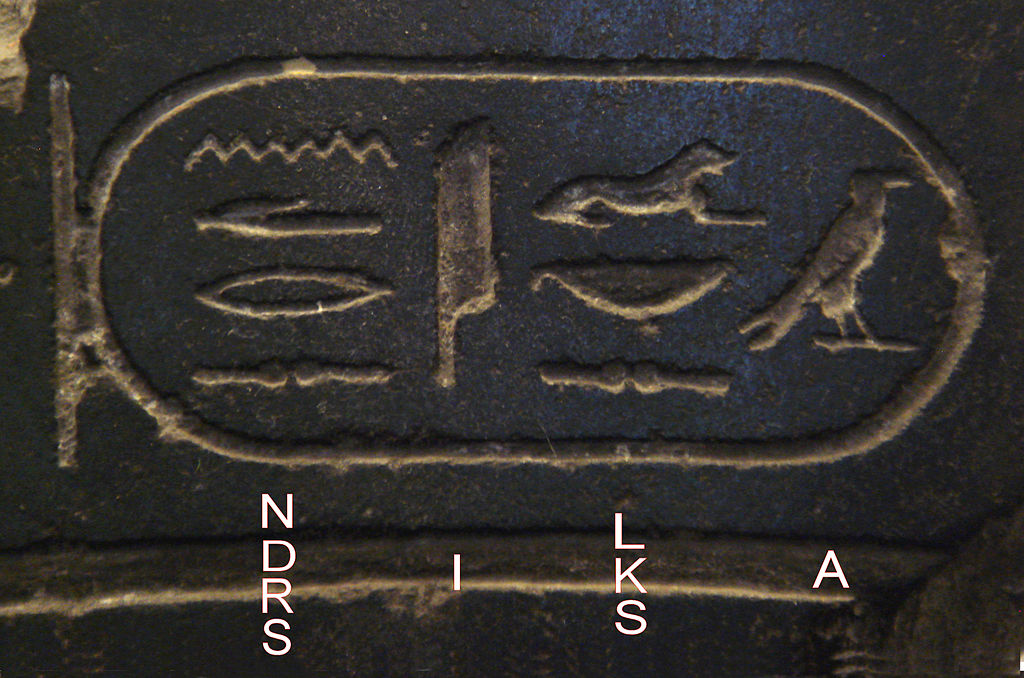
Being Hittite of etymology (Alaksandu: https://en.wikipedia.org/wiki/Alaksandu), the name of the Macedonian King was written in Egyptian hieroglyphics; this fact alone stands as a proof of the fact that there was no ‘Hellenization’ of the Oriental nations, but ‘Orientalization’ of the Macedonians and the so-called ‘Greeks’.
Having followed Alexander the Great and the Macedonians, the Pelasgian soldiers (called ‘Greeks’/’Hellenes’) settled in small communities in various locations of Asia and Africa; however, they were mostly reviled by the local people for their absurd way of life.
It goes without saying that, during the Late Antiquity, the term ‘Hellenism’ was never used about these small communities or colonies of Ancient Greeks/Hellenes (: in reality ‘Pelasgians’) that were established in various parts of the dissolved Iranian Empire from Cyrenaica to Bactria, because their inhabitants were already ‘Hellenes’ (Greeks).

Luxor temple; Alexander the Great praying to Amun
At this point, I must make clear that in Ancient Ionian (deliberately named ‘Greek’ by the racist scholars of the West), the nouns ending in –ismos originate from verbs that are formed with an ending in –izein (-ize in English); these forms helped describe the association with or the imitation of someone/something else. They were also used to express the meaning of becoming different from what one had originally been.
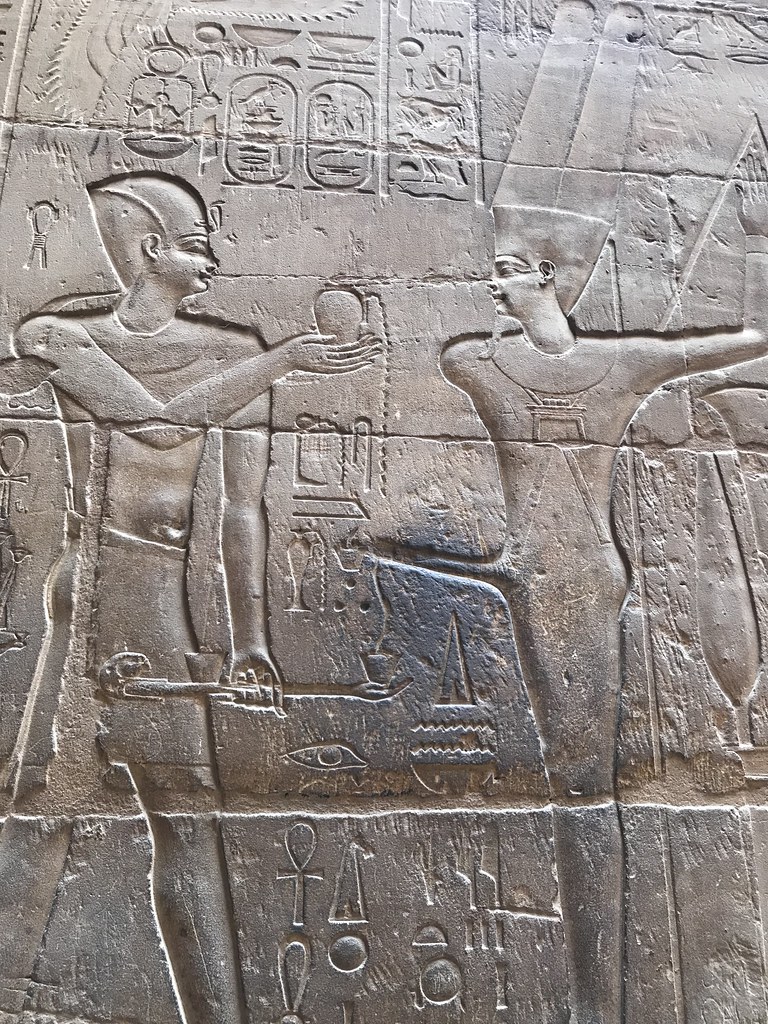
Luxor temple: Alexander the Great makes offerings to Min
So, speaking at the grammatical level, ‘Hellenizing’ can be eventually said about anyone except for Hellenes/Greeks (in reality: Pelasgians), because other people imitating the Hellenes can truly be described as ‘Hellenizing’, but the Hellenes, being already who they are, cannot ‘Hellenize’; it would sound nonsensical.
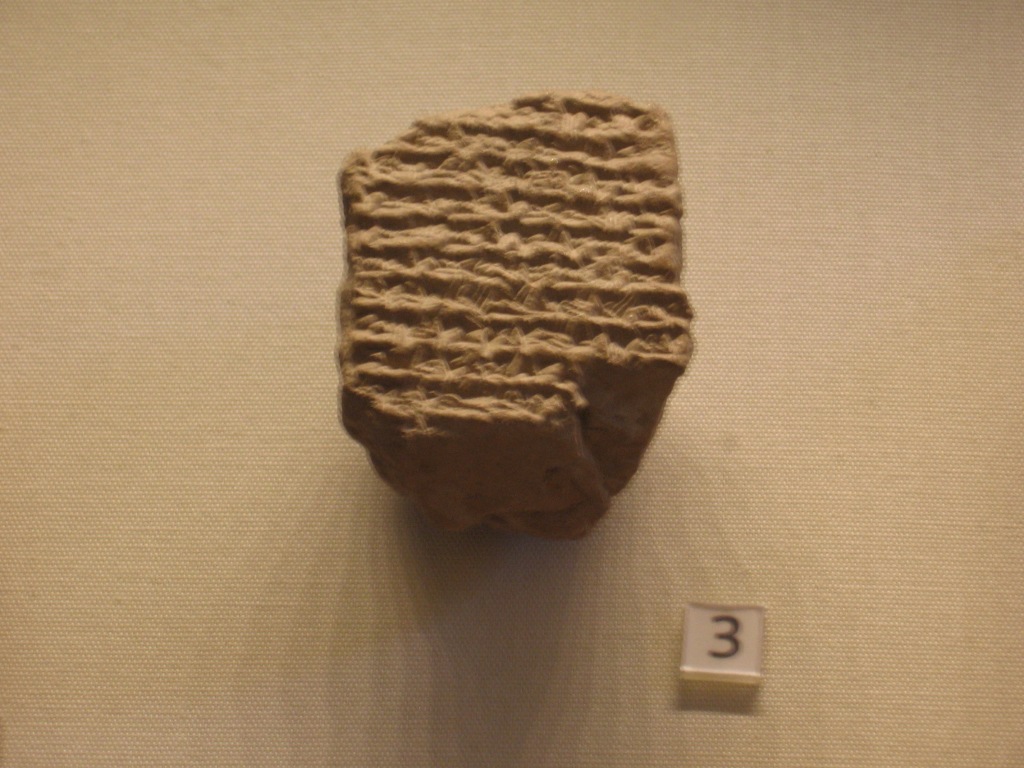
Babylonian astronomical diary written in Babylonian cuneiform (323–322 BCE) mentions the death of Alexander the Great.

Imperial Aramaic administrative document from Bactria, dating back to the 7th year of Alexander’s reign (324 BCE) from the Khalili Collection; when the name of Alexander the Great is written in Cuneiform Babylonian in Babylon, the capital of his empire, in Egyptian hieroglyphic in Egypt, and in Imperial (: Achaemenid) Aramaic in Iran and Central Asia, we can understand that there was no ‘Hellenization project’ in the Macedonian king’s mind. There was nothing from the so-called Ancient Greek civilization that could possibly be taken seriously and eventually accepted by the highly civilized Asiatic and African nations that accepted Alexander as Iranian king of kings.
Similarly, other people imitating the Ancient Egyptians can indeed be described as ‘Egyptianizing’; but the Egyptians, being already who they are, cannot ‘Egyptianize’. The same is valid for all possible terms: Babylonizing, Iranizing, etc. This is necessary to have in mind, because many ignorant people with evil political motives tend to misinterpret ‘Hellenism’ and pretend that the term denoted an ideology, a national theory or a feeling of national unity; that’s totally wrong.
There was never an Ancient Greek word to describe any feeling of national unity among the Ionians, the Aeolians, the Achaeans, the Dorians, and the other anti-Pelasgian ethnic groups, because such feeling never existed, in spite of Homer’s effort to re-Achaeanize them all. The absurd term ‘Panhellenion’ was coined very late; it was first used by the paranoid Roman Emperor Hadrian (117-138 CE), who suffered from an enormous psychological complex of inferiority opposite his great, magnificent and omnipotent father, namely Emperor Trajan (98-117 CE). Being the worthless son of an illustrious and most successful father and failing to inherit the slightest portion of his predecessor’s military skills, the foolish Hadrian wanted to regroup together all the Greek-speaking slaves of the Roman Empire. That is why he fabricated the otherwise useless term; however, even the project failed. About:
https://www.persee.fr/doc/dha_0755-7256_1999_num_25_2_1540
https://en.wikipedia.org/wiki/Hadrian#Religious_activities
https://en.wikipedia.org/wiki/Panhellenion
It is essential at this point to underscore two key issues; first, the term ‘Hellenistic period’ is not false only because it describes a secondary and rather marginal phenomenon that concerns only the few nations which imitated the Ancient Greek (Pelasgian) lifestyle after the end of the 4th c. BCE, but also due to the fact that, by focalizing on this event, one distorts the wider picture and definitely misrepresents the major historical developments that took place immediately after the military expedition Alexander the Great and the replacement of the Achaemenid dynasty by him on the throne of Iran.
Actually, it has to be pointed out that the brave Macedonian mystic and king did not undertake ‘many’ military campaigns and expeditions like Assurbanipal, Cyrus the Great, and Darius I the Great; simply, after defeating the ‘Greeks’, he only invaded the ailing and quasi-decomposed Iranian Empire and he tried to rule it as an Iranian king of kings.
The concept behind Alexander the Great’s attempt to supplant the Achaemenid dynasty with his own reign in Iran testifies to a very conscious and truly magnificent effort to Orientalize the Macedonians and all the adjacent nations, ‘Greeks’ included. The real nature of Alexander’s endeavor was apparently not to diffuse the barbarian ethos and the lowly culture of those, whom he had already crushed and submitted (i.e. the petty political leaders of Thebes, Corinth, Athens, Sparta and the rest of the South Balkan ordeal), but to civilize (i.e. Orientalize) the disorderly and uncivil populations of his empire’s western confines.
Alexander put an end to the nonsensical politics of the choleric demagogues and sought to impose imperial rule on those who had failed to realize that there cannot be civilization without an empire and a clear-cut Caesaropapist model of power. The historical context of his time bears therefore witness to the fact that Alexander the Great attempted to do the exact opposite of what the racist academics of England, France and America have fallaciously and persistently tried to credit him with.

Roman mural from Pompeii depicts Alexander & Barsine (Stateira), the eldest daughter of Darius, as Ares & Aphrodite in an allusion to the Susa weddings, which took place in the old Elamite and later Achaemenid capital (324 BCE) in order to formally endorse the Orientalization of Alexander’s soldiers who were married to Iranian princesses after the Achaemenid ritual and fashion. Although the historical sources state details that do not allow us to doubt about the nature of the event, the Roman artist, ca. 400 years later, clearly distorts the historical scene that he wanted to commemorate. More than 1500 years, numerous corrupt Western European painters took the distortion to a higher level.
Alexander’s exemplary substitution of Parsa (Persepolis) with Babylon as capital of Iran demonstrates that
i. he viewed himself as an Iranian (or Oriental) king of kings (: emperor),
ii. he considered Macedonia and Greece as apparently peripheral and not central parts of the Iranian Empire (thus spearheading an overwhelming, determinant and irreversible Orientalizing process),
iii. he adopted the Oriental imperial order, discipline and world conceptualization, thus fully rejecting the inhuman paranoia of ‘Greek politics’ and the abomination of the disreputable Athenian state,
iv. he adhered to Oriental spirituality, faith and mysticism, therefore rejecting the childish nonsense of the so-called Ancient Greek philosophers (Aristotle included), and
v. he wanted to shift (and actually he did shift) the center of the vast Empire out of Fars (Persia), thus evidently posturing as an Anti-Persian Iranian.
Second, by focalizing on this development (namely the ‘Hellenizing’ attitude of few Oriental peoples), one distorts the wider picture and definitely misrepresents the major historical developments that took place in the period between Alexander the Great’s death (323 BCE) and the Christianization of the Roman Empire (313–380 CE).

Statue of Buddha: 1st-2nd c. CE, typical sample of Gandhara Art (in today’s NW Pakistan and Eastern Afghanistan). When the descendants of some soldiers of Alexander the Great accept Buddhism as their own religion, we have a typical example of Orientalization, since people of Macedonian and/or ‘Greek’ origin accept an Oriental religion. But the racist and paranoid Western European and North American academics describe this phenomenon as ‘Greco-Buddhist art’. There is not a shred of Ancient Greek influence on Gandharan Art; it is an entirely Iranian-Indian amalgamation of patterns and styles.
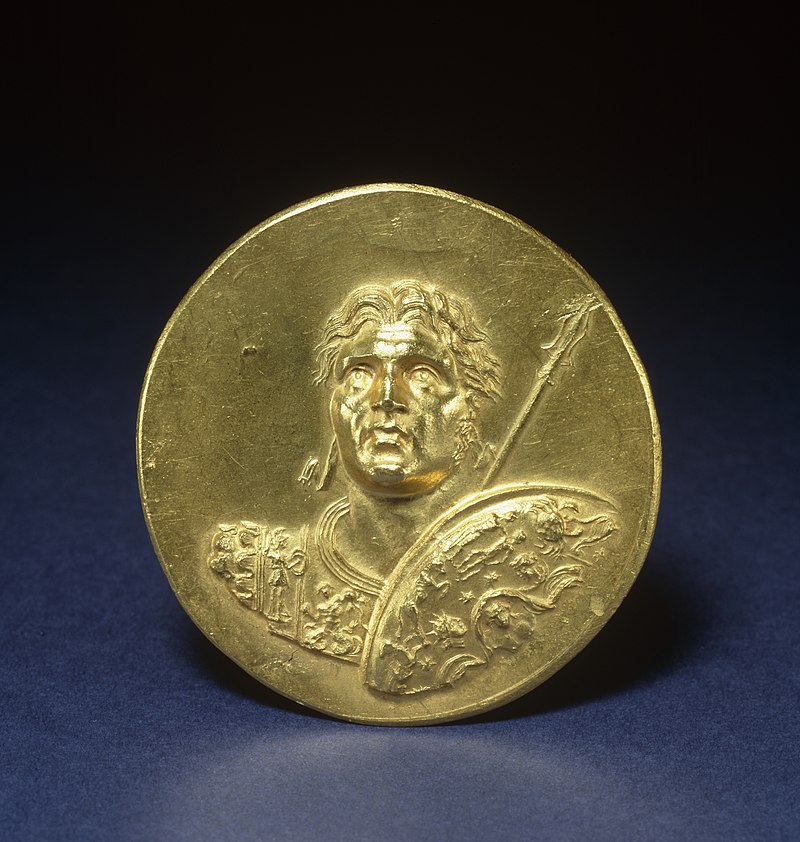
Alexander medallion from Imperial Rome; if the Romans failed to found a genuine Oriental empire, this is partly due to the fact that they were unable to understand the spiritual means and motives of the Macedonian-Iranian king.
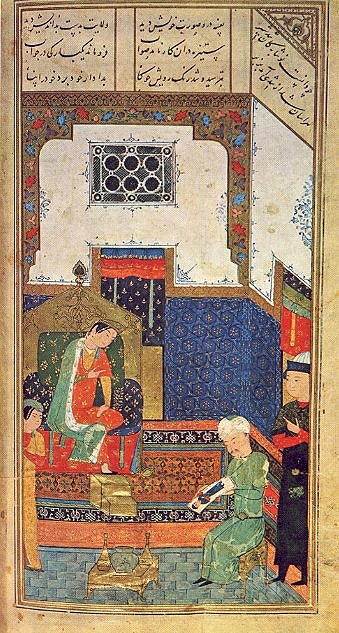
Above: Alexander (Iskander) depicted on the miniature of a 15th c. Iranian manuscript from Herat; below: Alexander sharing his throne with Queen Nushabah, from a 16th c. manuscript of Nizami Ganjavi’s Sharaf-Nama. In the pre-Christian, Christian and Islamic traditions, which are preserved thanks to the so-called Alexander Romance and many Iranian and Turanian epics, a far more original, legendary and mythical, figure of Alexander the Great stands at the epicenter of the narrative.
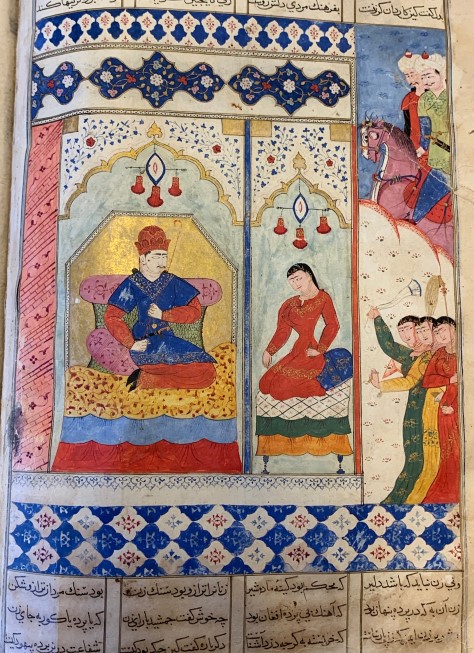
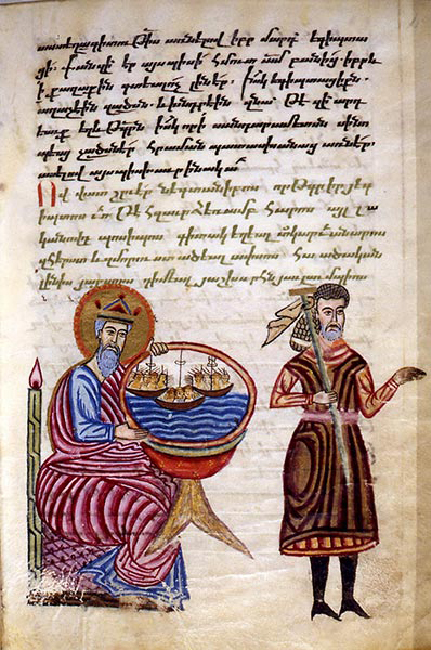
From the Armenian version of the Alexander Romance: details depicted in the miniature: exiled in Macedonia, the Egyptian Pharaoh Nectanebo by magic predicts the fall of Egypt to the Iranians. The Alexander Romance is a typically Oriental kind of mythical-eschatological literature that simply could not be produced by any Greek-speaking author in the Late Antiquity. The earliest editions date back to the 4th c., but it is certain that the original narratives must go back to the 3rd c. BCE. Although modern scholars believe that the original edition must have been a now lost Greek text of which we have the Latin, Syriac, Armenian and Georgian translations during the period 4th-6th c. CE, it is more probable that the original edition was in Aramaic or Pahlavi. In any case, newer editions were quite often extensions, revisions and modifications. The highly divergent text is now available in dozens of editions and copies, notably in Syriac, Armenian, Latin, Medieval Greek, Middle Persian, Hebrew, Georgian, Coptic, Ge’ez, Farsi, Arabic, Slavonic and several European languages. This narrative reflects the historical truth more accurately, but it is not easy to correctly interpret the ciphered meaning of the text. But this matter, in its entirety, only highlights the cultural Orientalization of the Macedonians and the Greeks; it also gives a blow to the racist academic dogma about the so-called ‘Hellenistic period’. There is nothing ‘Greek’ (or ‘Hellenic’ or ‘Classical’) in the Alexander Romance: it is purely Oriental. About: https://oxfordre.com/classics/display/10.1093/acrefore/9780199381135.001.0001/acrefore-9780199381135-e-8245;jsessionid=882E2ED330872834BEE79E9F6B01A398?rskey=AfLpXv&result=3
The rise of the Christian dogma as official (and later as the only official) religion of the Roman Empire constitutes only one late dimension of the phenomenal diffusion of Oriental cults, mysticisms, concepts of imperial rule and universalism, spiritual sciences, religions, faiths, imperial systems and practices of administration, cultures, and behavioral systems across Balkans (‘Greece’ included), Rome and Europe. This extraordinary development, which irrevocably shaped World History, took place during this period, thus making of the entire European continent a mere annex of the Oriental civilizations.
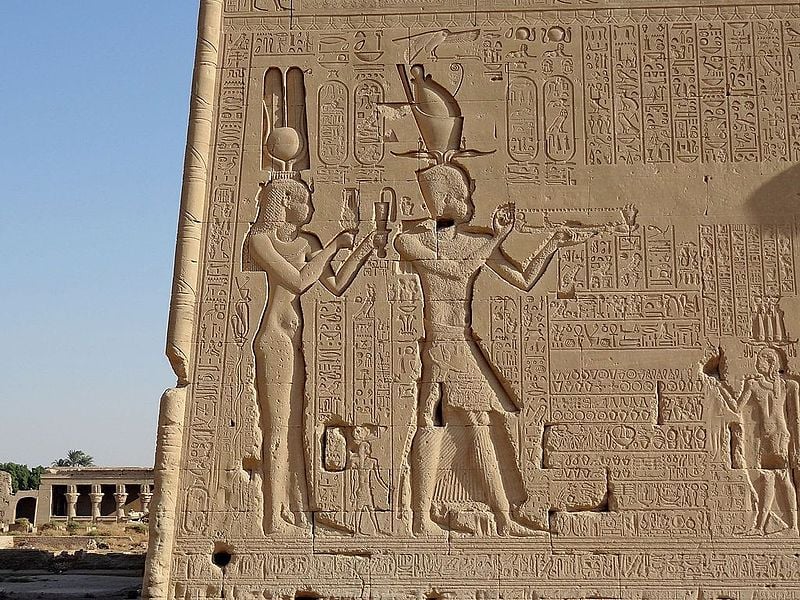
Cleopatra VII and Caesarion depicted on the walls of the Temple of Hathor at Denderah as entirely Egyptian pharaohs
As a matter of fact, the Hellenizing attitude of few Oriental peoples was entirely overshadowed by the Orientalizing attitude of all the Western peoples (: ‘Greeks’, Romans, and all the other tribes and ethnic groups on European soil), because they all imitated -extensively, comprehensively and irrevocably- the Ancient Oriental lifestyle (: the true, historical Orientalism) and adopted Oriental concepts, principles, cults, faiths, trends and attitudes during that period (323 BCE – 380 CE).
Minor facts, such as the diffusion of Ionian language among Lydians and the spread of ‘Ancient Greek art’ among the Carians, were deliberately focused on and strongly underscored by the racist Western academics in order to cause confusion among the average public, distort the educational system of the Western countries, and conceal the historical reality. As an academic endeavor, it was futile and puerile at the same time; actually, the so-called Ancient Greek art was not authentic, as it consisted in an interminable series of adaptations of Hittite, Assyrian and Egyptian patterns, styles, models, and concepts. Indicatively:
https://blogs brown edu/arch-0760-s01-2019-spring/2019/04/14/the-bit-hilani/
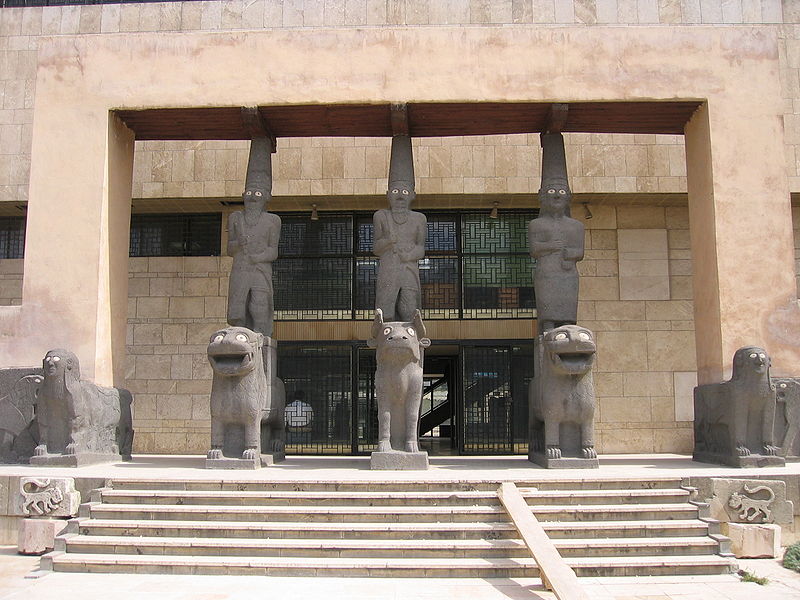

Above: Bit hilani (house of pillars) Mesopotamian typology of sacred architecture (entrance to Kapara palace in Tell Halaf) in the Aleppo National Museum; below: Athens Erechtheion
We can therefore conclusively state that the principal trait of Late Antiquity (i.e. the period stretched from the conquest of Babylonia by Cyrus the Great to the death of Prophet Muhammad (539 BCE-632 CE) is the fact that all the Ancient ‘Greeks’, the Romans and the Europeans adopted a great number of Oriental religions, theological doctrines, spiritual exercises, world views, esoteric mysteries, cosmogonies, cosmologies, eschatologies, cults, behavioral systems, and lifestyles.
Ancient Greeks adored Mithras, Horus, Isis, Cybele, Atargatis (‘the Syrian goddess’) and other Oriental deities, but in striking contrast, Ancient Iranians disregarded the sacrilegious Pelasgian (‘Ancient Greek’) narratives about Dionysus/Bacchus, Athena, and Pan. Ancient Greeks stopped having any interest for the lawless, immoral and absurd theories of the paranoid ‘philosopher’ Epicurus and for the shallow, pointless and confusing treatises of the spiritually underdeveloped but opinionated author Aristotle, and they started being concerned with the Chaldean Oracles, seeking magical recipes by Ostanes, and flocking to the mysteries of Ptah.
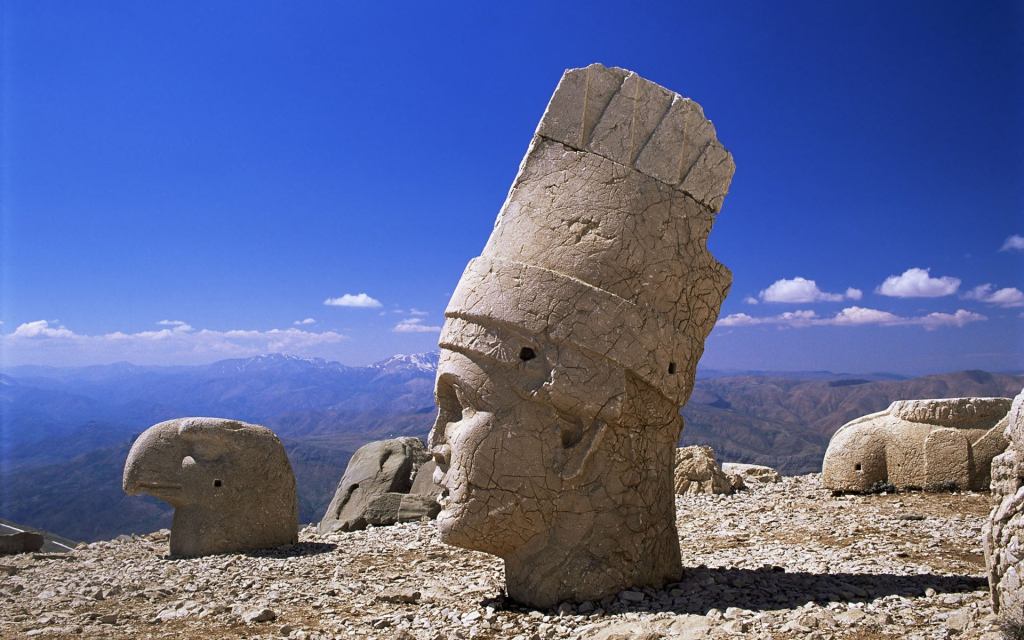
Nemrut Dagh, the peak sanctuary and mausoleum of Mithridates I of Commagene (near Adiyaman, in SE Turkey); Commagene was an Orientalistic, not ‘Hellenistic’, kingdom.
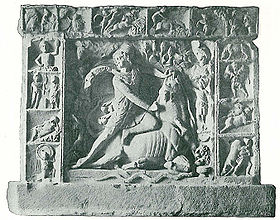
Relief from the Mithraeum of Neuenheimer (near Heidelberg): representation of the tauroctony, which was the main Mithraic myth, and of several other mythical narratives in the panels around the main theme
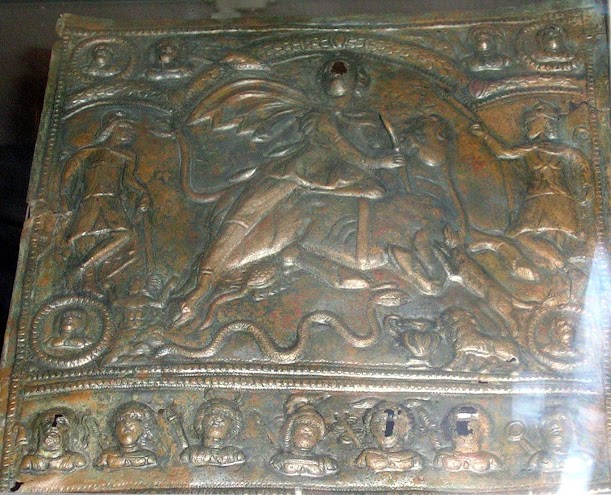
Bronze plate with representation of Mithraic tauroctony from Brigetio, Hungary (CIMRM 1727)

Mithraic tauroctony represented on a white marble found south of Monastero, Aquileia in 1888, now in Vienna
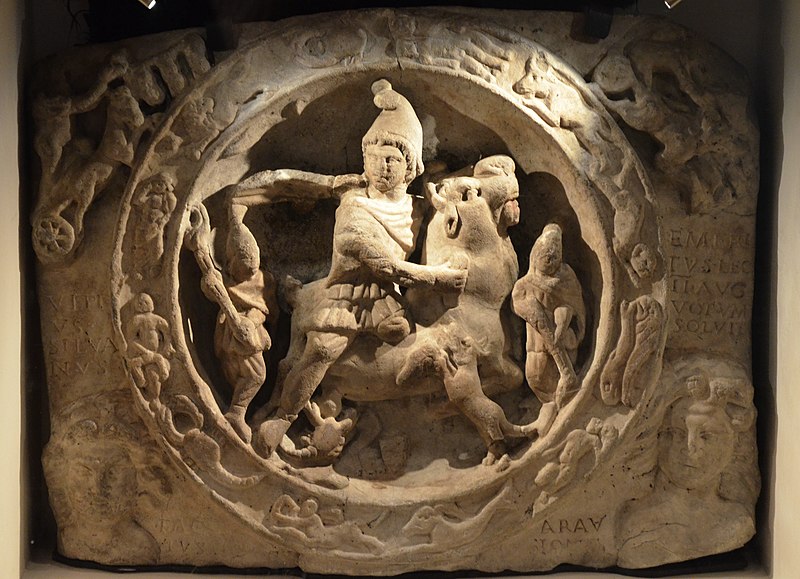
White marble relief with representation of the Mithraic theme of tauroctony from Walbrook, London; 180-220 CE
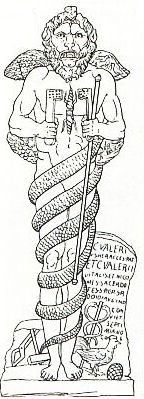
Zurvan represented as a lion-headed being from Ostia
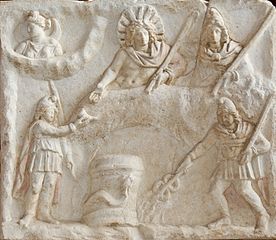
Sol (Sun), Mithras, Luna (Moon), assisted by Cautes and Cautopates represented in the lower part of a two-sided relief from Fiano Romano (2nd-3rd c. CE)
Ancient Romans adored Osiris, Thot (as Hermes Trismegistus), Zervan (as Saturn), and other Oriental concepts of divinity, but in striking contrast, Ancient Egyptians did not bother at all about the insignificant myths of Juno, Venus, Mercury and Vesta. Ancient Romans stopped expressing interest for the childish sermons of their orators and for the republican nonsense of their recent past; quite contrarily and with utmost nostalgia, they were inclined to evoke their remote Antiquity in Anatolia (Aeneid).
All the other European nations of the Roman Empire acted similarly, and to this fact testify the many hundreds of Mithraea (temples of Mithra), Iseia (temples of Isis), and temples of other Oriental divinities that have been unearthed across Europe, within the Roman Empire and beyond its borders, from the Iberian Peninsula to Hungary and from England to Ukraine.

Representation of Isis on a wall painting from Pompeii

Nile god from the Isis and Serapis Temple on the Campus Martius, Rome
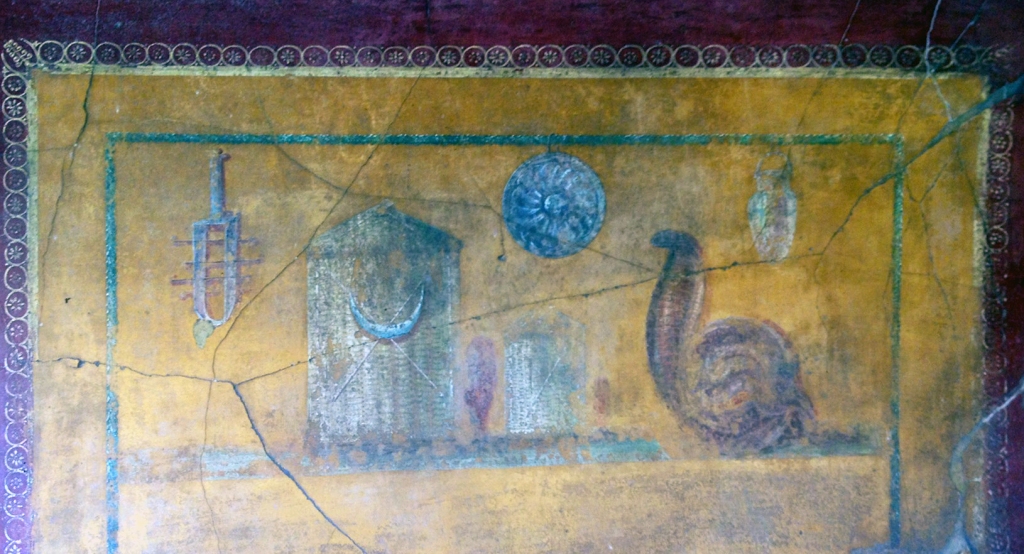
Pompeii: wall painting with sacred utensils necessary in the Isiac cults

Sistrum unearthed in Pompeii, currently in the Museum of Napoli (Naples); it was indispensable for the Isiac cults.

Roman buildings depicted on the Haterii tomb in Rome; the arch ‘to Isis’ is the first from the left.
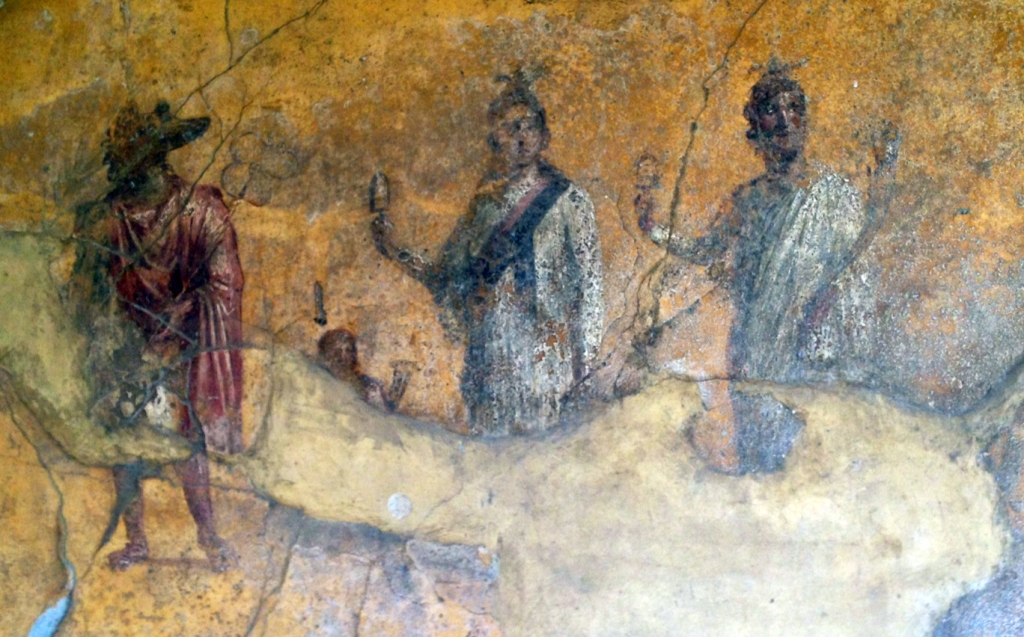
Pompeii fresco with a priest dressed as Anubis and two priestesses of Isis
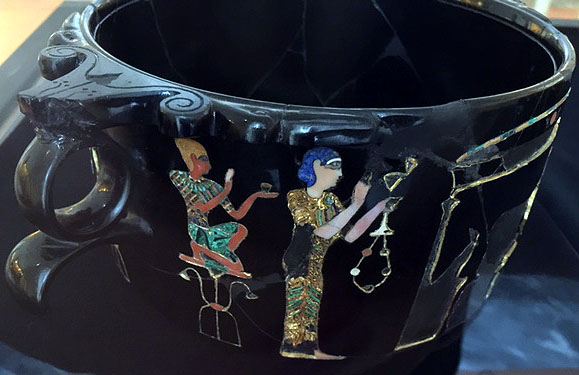
Roman cup for Isis cult from Pompeii
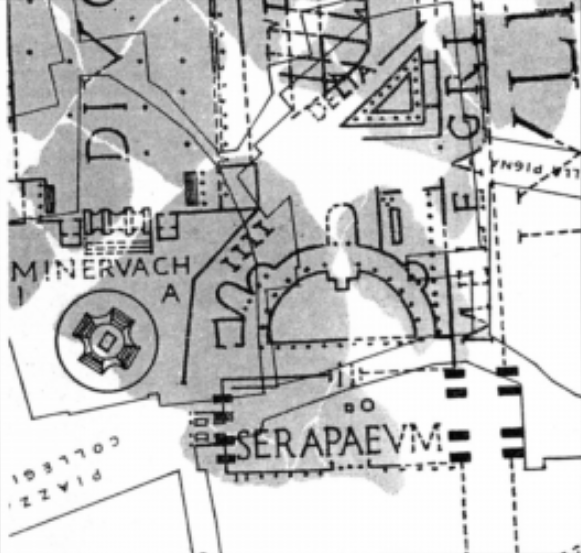
Serapeum on the Forma Urbis Romae
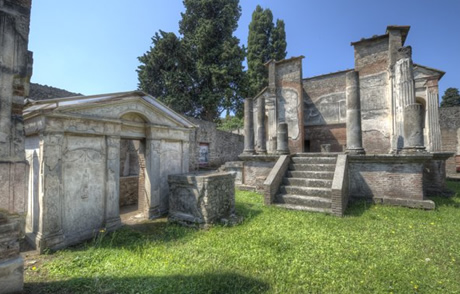
The Iseum (temple of Isis) at Pompeii
The extreme disgust for the disgraceful political system of Ancient Athens and the total disrespect for the worthless talks of the Ancient Greek and Roman philosophers fully characterize this period of Oriental impact on Ancient Greeks, Romans and Europeans. Such was the impact that these underdeveloped nations disappeared, because the followers of Mithra in Rome, Macedonia, Athens and Ephesus had more in common among themselves than one of them with one of his ‘compatriots’ who happened to be an adept of Isis or a devotee of Atargatis, the ‘Syrian goddess’.
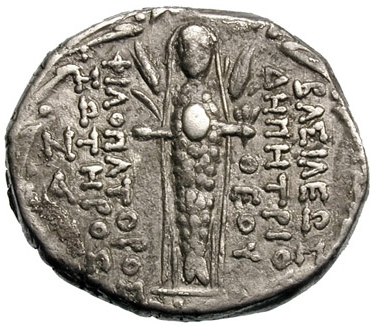
Reverse of a coin of the Seleucid king Demetrius III (96-87 BCE) with fish-bodied Atargatis
This situation became then decisively important: affiliation with a mystical order eclipsed ethnic membership and clannish affiliation, at a time no patriotism could subsist anymore but no imperial doctrine and theory had yet been incepted. It is true that the formation of the Roman Empire was very different from the inception of the Oriental empires.
People realized then that politics, theater and philosophy were good for nothing, as they disoriented every human being and member of a society, and distracted all humans from the basics of human life, as these had been spelled out by all major Oriental civilizations. In terms of Eschatology and Soteriology, Ancient Greek philosophy and politics were worthless notions and apathetic practices. As such, they were duly and irreversibly rejected once for all.
The terms ‘Neo-Platonism’ and ‘Neo-Pythagoreanism’ are entirely fake; in fact, they function as a smokescreen for the Oriental spiritual schools, faiths, mysticisms, theologies and religious doctrines that the various so-called ‘Neo-Platonic’ and ‘Neo-Pythagorean’ philosophers stood for and attempted to widely popularize among their various students. The correct terms in replacement of these appellations are ‘Egyptian Heliopolitan’ and ‘Egyptian Memphitic’ respectively; this is so because both thinkers (Plato and Pythagoras) were formed after several years of studies in Egypt and they produced their theoretical systems as subsequent reflections of these two Ancient Egyptian systems of spirituality, world conceptualization, faith and theology.
However, one must never confuse between the low level of a Neo-Platonic pupil in Athens, who was limited in theorizing, and the spiritual potency of an initiate in the mysteries of Isis at the Philae Island temple.
Quite notably, if the racist academics of Western Europe and North America wanted to conceal this paramount reality, this was basically due to the crucial fact that the spiritually inexperienced Neo-Platonic pupil was indeed an Athenian (i.e. a White Guy) whereas the Isis initiate was a Blemmyan or a Nubian Black African. That’s why Hellenism is abhorrent racism.
How could one therefore describe correctly this period, efficiently replacing the fallacious term ‘Hellenistic period’?
The response is very simple: it was an ‘Orientalistic period’.
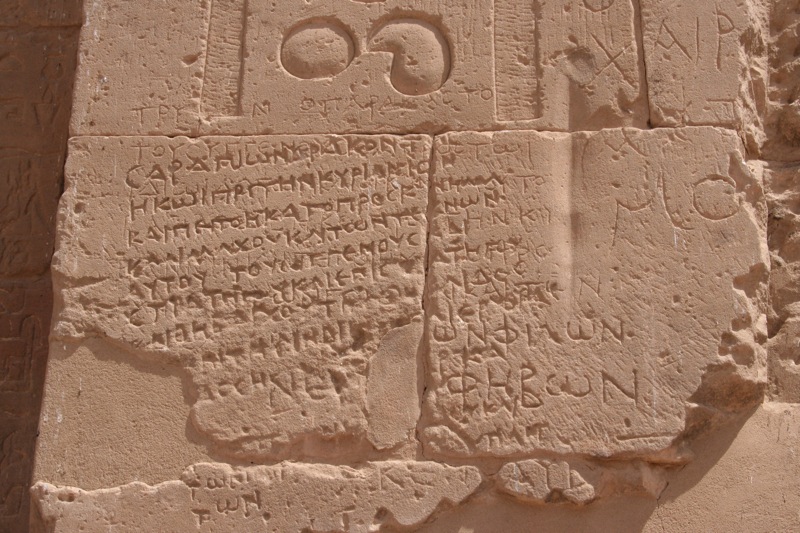
Ancient ‘Greek’ graffiti on the First Pylon of the Temple of Isis at the Island of Philae
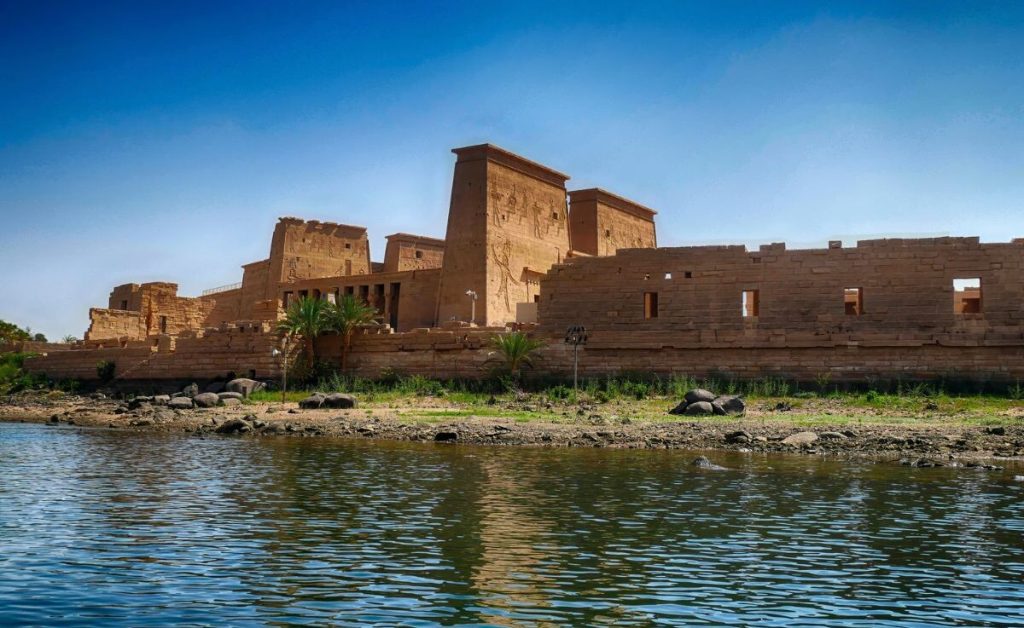
The temple of Isis at the Island of Philae; it was the last throughout the Roman Empire to still offer cults to pre-Christian religions.
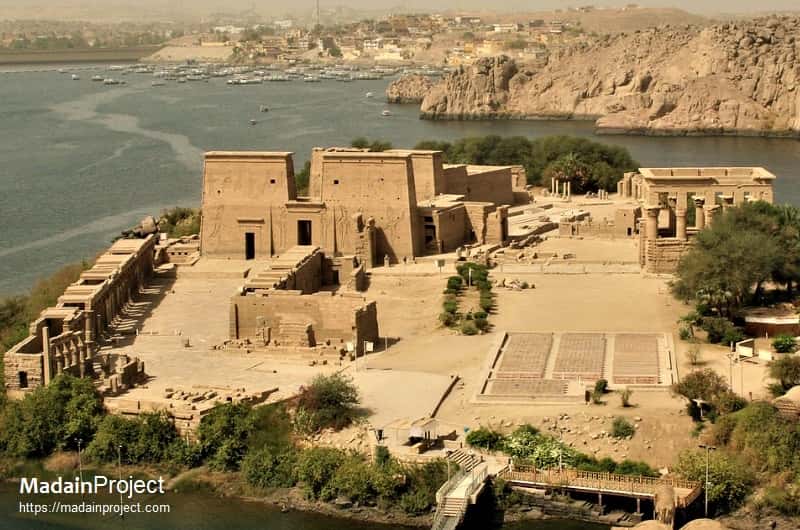
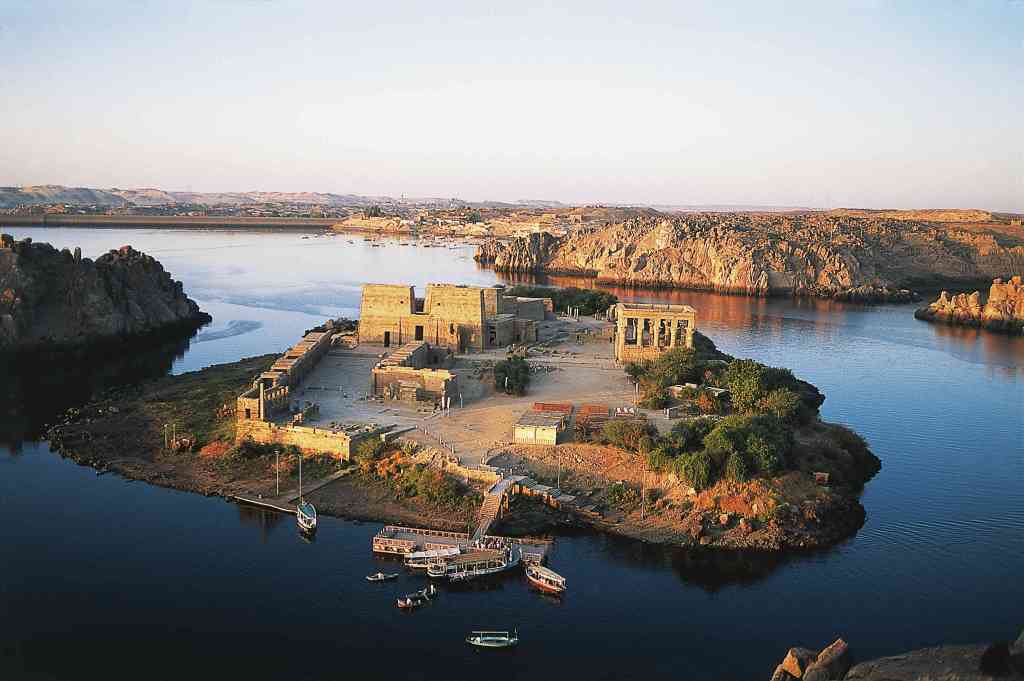

Justinian I issued a special edict to close down the Temple of Isis; part of the temple was immediately transformed into a Coptic church.
———————————————
Download the chapter (text only) in PDF:
Download the chapter (with pictures and legends) in PDF:




